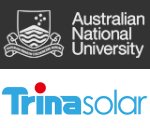Australian solar researchers partnered with one of China’s largest producers of PV products to develop a new highly-efficient solar cell.
After two years of funding and extensive research, Trina Solar Ltd. has announced that scientists from the Australian National University’s Centre for Sustainable Energy have successfully delivered an efficiency of 24.4 percent with their cutting-edge Interdigitated Back Contact (“IBC”) solar cell, among the highest light-to-energy conversion levels available in conventional silicon solar cells.
Work on the IBC cell was carried out in a collaboration contract with Trina Solar and the Solar Energy Research Institute of Singapore (SERIS). The prestigious Fraunhofer solar energy research institute confirmed the ANU result.
“We are delighted to collaborate with leading scientists at ANU on this exciting new development in our cell technologies,” said Dr. Pierre Verlinden, Vice-President and Chief Scientist of Trina Solar.
“This marks a milestone in solar cell research with an improved IBC cell efficiency of 24.4%. This world-class efficiency demonstrates our commitment to leading innovation in PV technology. We remain committed to engaging in effective partnerships with the best PV research centres, which are fundamental to delivering R&D breakthroughs.”
The IBC cell has been in development at the ANU’s Centre for Sustainable Energy since mid-2011 and has significant advantages over standard solar cells. The cell is “rear contact”, meaning both positive and negative contact points are placed on the back wall of the cell, which allows photons to travel unimpeded through the device before being converted into energy.
According to ANU Professor Andrew Blakers, Director of the Centre for Sustainable Energy Systems:
“That allows the surface facing the sun to be uniformly black, without the metal electrodes present on most solar cells. The back contact cell structure enables the end user to gain more electricity per unit area and a more favourable appearance.”
The result is the highest efficiency level yet recorded for an IBC cell and means the technology can now be further developed for commercial solar cells. Trina Solar is now developing a commercial version of the IBC solar cell as well as an IBC PV module.












































